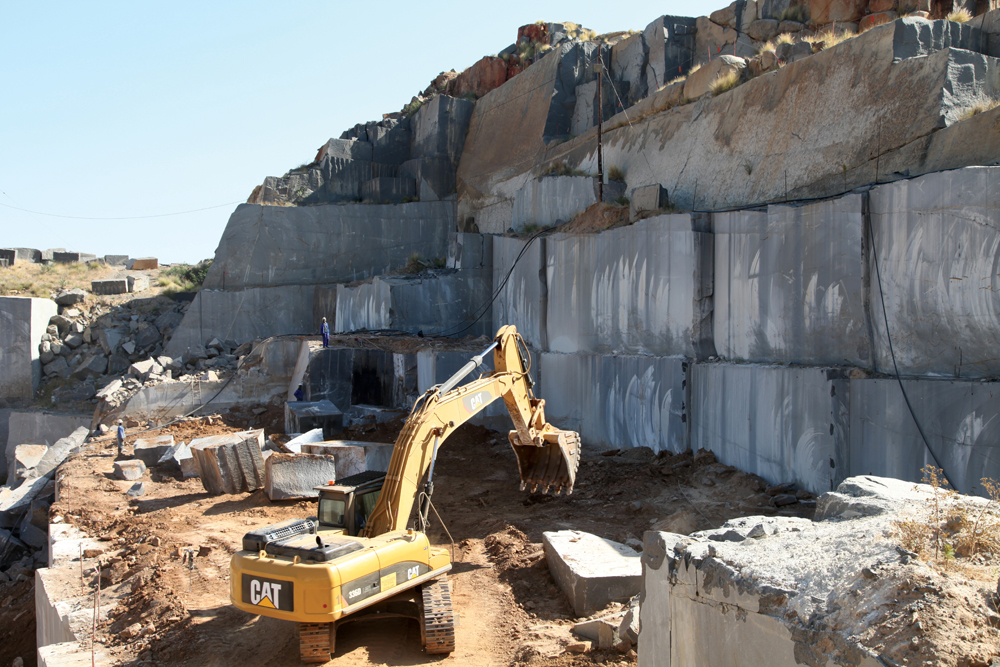Uncovering the Rich Background and Lasting Practices of Granite Quarrying
As we stand on the precipice of discovering the intricate tapestry of granite quarrying, a trip with time reveals not simply the physical act of removing stone yet also the cultural and historic significance woven into the very material of this practice. From the ancient beginnings that laid the foundation for modern-day quarrying techniques to the lasting practices that are forming the future of this sector, each chisel mark on granite surface areas informs a story waiting to be discovered (granite quarries in south africa). The tradition of granite quarrying extends far past plain extraction; it is a testament to human resourcefulness, durability, and the long-lasting allure of this marvelous rock
Old Origins of Granite Quarrying
Dating back to ancient people, the technique of quarrying granite has actually been an essential part of human history and building innovation. The earliest proof of granite quarrying days back to old Egypt, where huge pyramids and elaborate sculptures were crafted from this long lasting rock. The Egyptians made use of primitive devices to extract granite blocks from quarries, showcasing the importance of this material in their monumental buildings.
Progressing in history, the Greeks likewise made considerable contributions to the quarrying of granite. The Greeks utilized granite in different architectural marvels, such as temples and statues, showing their ability in shaping and sculpting this sturdy stone. The Romans even more fine-tuned the methods of quarrying granite, employing advanced tools like knives and hammers to remove and form granite for their famous structures.
Through the centuries, the practice of quarrying granite has actually advanced, with modern-day innovations improving efficiency while maintaining the classic allure of this natural stone - granite quarries in south africa. From old human beings to modern contractors, the tradition of granite quarrying remains to form our world
Development of Quarrying Methods
The development of quarrying strategies has actually been marked by a constant progression in the direction of better effectiveness and precision in removing granite. From the primary approaches utilized by our forefathers to the advanced technologies made use of in contemporary quarrying operations, the sector has undertaken considerable developments. Early quarrying strategies involved manual labor with standard devices such as knives, hammers, and wedges to draw out granite blocks from the earth. As civilizations proceeded, methods like fire-setting and primitive nitroglycerins were introduced to facilitate the extraction procedure.
In more current times, the advent of machinery changed the quarrying industry, allowing much faster extraction rates and boosted performance. Technologies such as diamond cable saws, high-pressure water jets, and pneumatically-driven drills have actually come to be conventional in modern-day quarries, enabling exact cutting and lowered waste. Developments in computer-controlled equipment and 3D modeling have actually optimized quarrying procedures, leading to very little ecological effect and enhanced sustainability methods. As the demand for granite remains to increase, the development of quarrying strategies remains integral to conference market requires successfully and sustainably.
Social Relevance of Granite
Granite holds a profound social relevance across numerous worlds due to its long-lasting existence in architectural work of arts and revered monoliths. The cultural relevance of granite extends past its physical attributes; it personifies durability, stability, and eternity, making it a sign of sustaining heritages and customs.

Lasting Practices in Quarrying
In the middle of the abundant history of granite quarrying and its social value lies an expanding focus on lasting practices within the market. As environmental awareness and worries concerning source depletion have actually increased internationally, the quarrying industry has actually progressively embraced lasting techniques to minimize its this hyperlink influence on the environment and surrounding neighborhoods.

Additionally, improvement and rehab of quarry sites post-extraction are essential to sustainable methods. By bring back quarried areas to a natural or useful state, such as navigate here producing wildlife habitats or recreational rooms, quarriers can counter the ecological impact of their operations and contribute positively to the neighborhood ecological community.
Heritage of Granite Quarrying
With a historical backdrop steeped in workmanship and commercial development, what withstanding impact has granite quarrying click this site left on the landscape of modern culture? The heritage of granite quarrying goes beyond mere extraction techniques; it has formed building marvels, city landscapes, and social heritage worldwide. The long lasting nature of granite has made it a preferred selection for monuments, buildings, and framework, standing as a testimony to the skill and virtuosity of quarry workers across generations.
In addition, the financial footprint of granite quarrying can not be forgotten. The market remains to give employment possibility and drive neighborhood economic climates in regions where granite removal is common. It has actually likewise stimulated technical innovations in quarrying techniques and devices, causing a lot more reliable and lasting practices.
In regards to sustainability, the heritage of granite quarrying includes initiatives to mitigate environmental influences through improvement tasks and responsible resource monitoring. By balancing economic rate of interests with ecological stewardship, the industry strives to make sure that future generations can remain to gain from this enduring natural deposit.
Verdict
